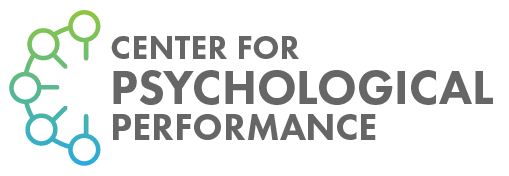Understanding Learning Disorders
Does your child avoid certain academic tasks? Do they become frustrated (and maybe even throw a tantrum!) when forced to complete homework? When reading, does your child guess at words or make errors on sight words you’ve practiced before? Do they struggle to explain what occurred in the story they read? Does your child have poor handwriting and make letter reversals? Does your child struggle to learn and remember basic addition and subtraction facts?
If this sounds like your child, it’s possible that they could be struggling with a Learning Disorder. A Learning Disorder is a diagnosable condition that indicates that a child’s brain is wired differently than the typical student upon which the school’s curriculum is developed. Although this unique wiring provides various strengths (particularly in the areas of problem-solving and creativity), it may impede a child’s ability to perform academically, despite putting forth a great deal of effort.
The world of learning disorders can be overwhelming, confusing, and terrifying to parents of children who struggle academically and learn differently than their peers. To complicate the issue further, some children struggle in multiple areas and can be diagnosed with more than one Learning Disorder. Although not technically labeled Learning Disorders, a diagnosis of Attention-Deficit/Hyperactivity Disorder (ADHD) or a Language Disorder both impact a student’s ability to succeed academically and will be discussed in future blogs. Although each child is unique and presents with their own particular set of strengths and weaknesses, there are some similarities within each learning disorder.
The Basics
To get started, let’s look at the formal names for the three main learning disorders:
Specific Learning Disorder with Impairments in Reading
Specific Learning Disorder with Impairments in Written Expression
Specific Learning Disorder with Impairments in Mathematics
These names are certainly a mouthful, aren’t they?! As such, these learning disorders have alternative terms by which they are more commonly referred: dyslexia (impairments in reading), dysgraphia (impairments in writing), and dyscalculia (impairments in mathematics). However, the wordier formal term is likely what you will see listed as a child’s diagnosis on a psychological or psychoeducational evaluation. Each of these disorders are identified by deficits in specific areas. Your child may have deficits in only one area or all of them. So, even if two children are diagnosed with the same learning disorder, they may have very different academic challenges and require different interventions, support, and accommodations.
Specific Learning Disorder with Impairments in Reading
The three main areas of deficit are:
word reading accuracy
reading rate or fluency (i.e., how quickly and smoothly a person reads)
reading comprehension
Often when a child has deficits in all areas, the term dyslexia is used to describe their pattern of learning difficulties. It is then depicted on a continuum from mild to severe, which indicates the level of support, remediation, and accommodations necessary for the student to succeed within the structure of the academic world.
However, not all children that have difficulty with reading fit into the “dyslexic” box. Sometimes, a student reads accurately, but very slowly and methodically. Or they may struggle to find a natural rhythm to their reading. For example, a child may not pause when reaching a punctuation mark, but instead reads a paragraph as one long continuous sentence. Alternatively, the student may read in a choppy manner, as they cluster three or four words together and pause frequently.
A child who is impacted only in the area of reading comprehension may read spectacularly and not struggle with vocabulary on or above their grade level. However, upon completion of the passage, the student may have significant difficulty answering questions, particularly those requiring them to make inferences (i.e., How do you think the main character felt? What do you think will happen next?). These children often find ways to compensate such as rereading the passage to find the answers to questions, using pictures from the story, or accessing their own knowledge base (regardless of the actual story) to make an educated guess.
Common methods of addressing these difficulties include specialized tutoring involving multi-sensory instruction, working with a speech and language specialist, and/or attending a school designed specifically for those with learning differences. Additionally, various accommodations are suggested to ease the academic demand within the school setting.
Specific Learning Disorder with Impairments in Written Expression
Common areas of deficit include:
spelling accuracy
grammar and punctuation accuracy
clarity or organization of written expression
The term dysgraphia is often attributed to those that are impaired in all areas. Additionally, these children frequently hold their pencil awkwardly, have difficulty forming letters and may make letter reversals, struggle to keep appropriate spacing between letters and words, and write slowly or with a lot of pressure. Often times, you will see these students shaking out their hand when completing a writing task, as it requires a lot of effort and puts a great deal of strain on the muscles in their hand.
Children that have no difficulty with the physical act of writing may still struggle with one of the other aspects of writing. Students that struggle with grammar and punctuation may include a variety of run-on sentences, make noun-verb disagreements (i.e., Mom and Dad is happy), or be inconsistent with the appropriate use of capital letters.
Other children have difficulty organizing their writing. They struggle to express their thoughts and ideas clearly. Often their writing appears to follow their stream of consciousness rather than a logical pattern that allows others to understand their viewpoint.
Interestingly, many students diagnosed with this disorder have no difficulty articulating their thoughts and can quite effectively dictate their responses. Their particular challenge is in the act of putting pencil to paper. The extra demand placed on their brain required to do this impedes the child’s ability to allow their thoughts and ideas to flow freely. As a result, the written work of these children fail to show their true knowledge and is often far below their potential. Given the chance to respond verbally, these students show great understanding of the task at hand.
As there is a lot of overlap in reading and writing, it is common for a child to be diagnosed with both Learning Disorders. Typically, one of the disorders is more severe or prominent than the other and interventions are put in place accordingly. To further confuse parents, teachers, and tutors, students with dyslexia frequently have difficulty with spelling and may make letter reversals, particularly when required to write in complete sentences.
Similar interventions for those with reading difficulties are used to minimize the impact of this Learning Disorder. In addition, significant difficulties with the physical act of writing may require the use of an occupational therapist to improve fine motor skills.
Specific Learning Disorder with Impairments in Mathematics
Typical deficits are:
number sense
memorization of arithmetic facts
accurate or fluent calculation
accurate math reasoning
Children who experience deficits in all areas are said to be struggling with dyscalculia. These students have difficulty understanding the foundational concepts of math and often lack a basic sense of numbers and quantity. In other words, they struggle to comprehend that the number 5 represents an actual quantity and that it is larger than 3 but smaller than 9. You can imagine the challenges a child would face in learning higher-level math concepts (such as addition, subtraction, multiplication, or division), if they are unable to comprehend where a number belongs on a number line.
Children that only have difficulty with math reasoning often have a strong number sense, but lack comprehension on word problems to understand how to “set up” the math problem. They may not recognize that “less” indicates the use of subtraction, while “all together” suggests the use of addition. Other students may simply struggle to work quickly on math tasks, as they lack automaticity in their knowledge of basic math facts (i.e., 2 + 2 = 4). However, when given the opportunity to use a calculator, their performance improves dramatically.
Similar to the other Learning Disorders, interventions include specialized tutoring and/or attending a school designed specifically for those with learning differences. As these students progress to high school and college, they frequently benefit from accommodations so that their academic performance matches their potential.
Conclusion
A diagnosis of any of these issues is technically considered a Learning Disorder or Learning Disability. The need for a label of disorder or disability is necessary for parents and students to advocate for additional services of support and accommodation to ensure the academic success of these students. However, most of us working with these students prefer the label “learning differences.”
Students struggling to overcome any of these challenges are often very intelligent, but have difficulty fitting within the academic box required by the education system. Their brains are simply wired in a unique way that requires a similarly unique teaching approach. Put simply, they learn differently than their peers.
By no means are these individuals “lazy,” “stupid,” or “defiant.” In fact, they have wonderful and unique strengths that are evident in their activities outside of the academic world, such as various creative endeavors, problem-solving, and athletics. Although being diagnosed with a Learning Disorder presents its own challenges within academia, it is by no means a limitation on your child’s ability to succeed in this world.
I hope this blog has given you a basic understanding of the three main Learning Disorders. If you believe you or your child may be struggling with an undiagnosed Learning Disorder, please contact me to discuss your concerns and the possibility of completing a psychoeducational evaluation.


